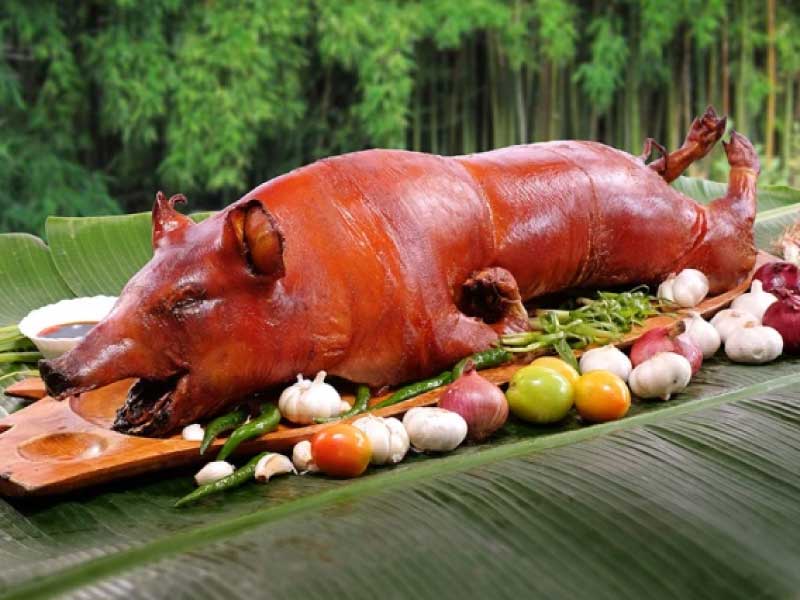A culinary journey
Pork has long been at the heart of Filipino cuisine, woven into the fabric of everyday meals and grand celebrations alike. Across the archipelago, families gather around tables where pork dishes are the centerpiece, whether it is a humble soup served on a rainy day or a whole roasted pig displayed during a fiesta.

Roasted Opotions
Grilled Options
Soups
Pork as starter
Starters in Filipino cuisine often feature pork in bite-sized, flavorful forms that excite the palate before the main course. Lumpiang Shanghai is a staple at parties, where ground pork is mixed with carrots, onions, and seasonings, wrapped in thin pastry, and deep-fried until golden. Served with sweet chili sauce or ketchup, it is a dish loved by both children and adults. Tokwa’t baboy offers a different kind of starter, combining boiled pork ears and belly with fried tofu, then dressing the mixture with soy-vinegar sauce, onions, and chili. It is often paired with rice porridge or enjoyed as a pulutan, making it versatile and satisfying. The Best restaurants of Coron do serve an endless list of pork based starters. Chicharon, or pork cracklings, is another favorite, where pork rinds or belly are deep-fried until crispy and eaten as a snack or appetizer, sometimes dipped in vinegar for added tang. These starters demonstrate how pork can be transformed into crunchy, savory bites that set the tone for feasts, embodying the Filipino love for bold flavors even in small portions.